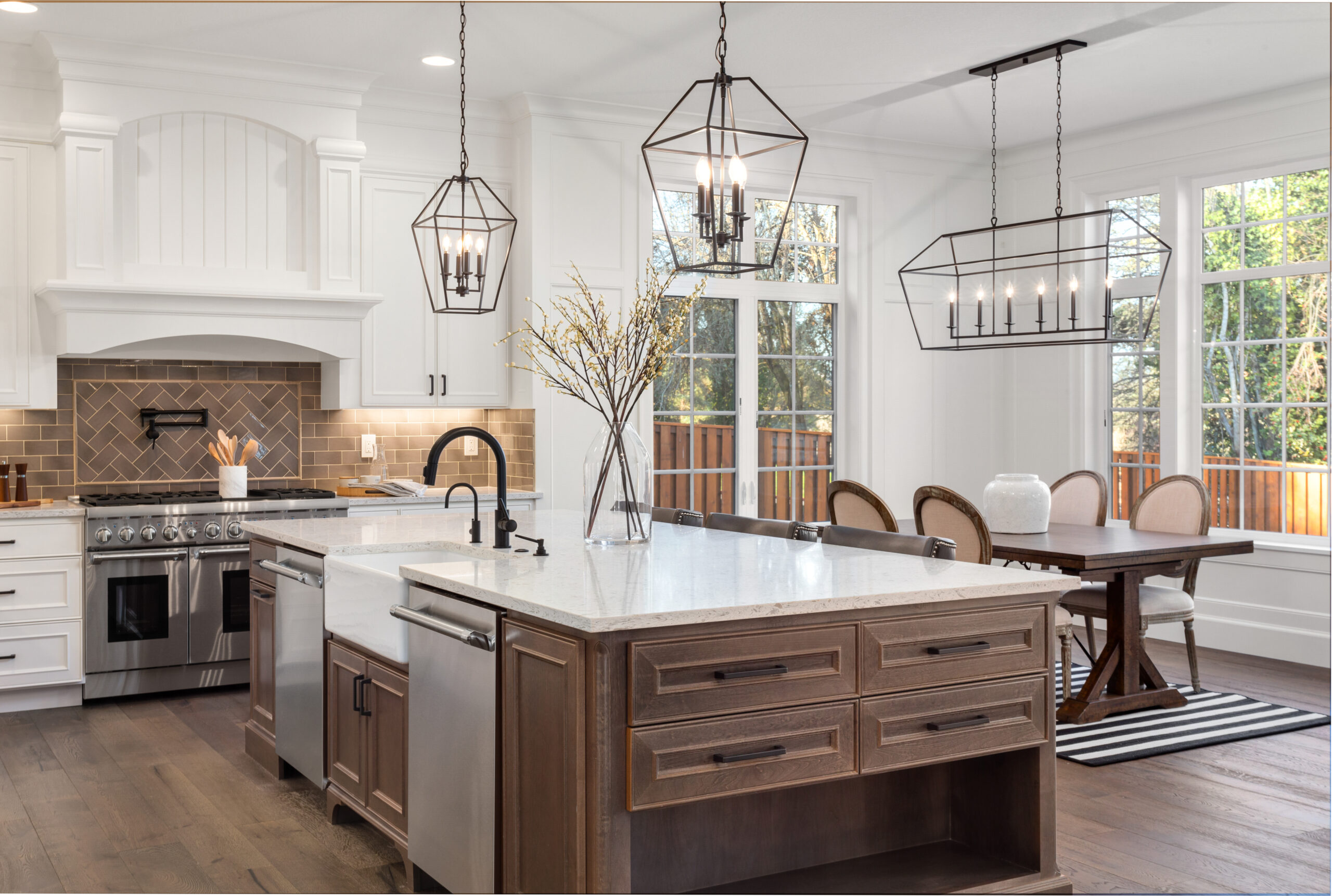The kitchen serves as both a functional workspace and a social gathering spot in modern homes, making proper lighting essential for both practical tasks and creating a welcoming atmosphere. A well-designed kitchen lighting plan incorporates multiple layers of light that work together seamlessly. This comprehensive kitchen lighting guide explores how to effectively combine ambient, task, and accent lighting to create a space that’s both functional and inviting. You’ll discover the best kitchen light fixtures for each lighting layer and learn professional techniques for layering light in your kitchen to achieve the perfect balance.
Understanding the Three Layers of Kitchen Lighting
Professional designers approach kitchen lighting as a three-dimensional system rather than a single solution. The concept of layering light in kitchens involves strategically combining different types of lighting to create depth, functionality, and visual interest. The three essential layers include ambient lighting (general illumination), task lighting (focused light for work areas), and accent lighting (decorative or highlighting elements). When implemented correctly, these layers work in harmony to create a kitchen that’s appropriately lit for everything from food preparation to entertaining guests. Functional kitchen lighting addresses practical needs while also contributing to the overall aesthetic of your space.
Ambient Lighting: Creating Your Foundation
Ambient lighting forms the foundation of your kitchen lighting scheme, providing overall illumination that helps you navigate the space safely. This primary layer typically comes from ceiling-mounted fixtures such as recessed lights, flush mounts, or semi-flush fixtures. When planning your ambient lighting, consider the kitchen’s size and ceiling height to determine the appropriate fixture type and quantity. For larger kitchens, combining recessed lights with a central decorative fixture often works well. In smaller spaces, a single well-chosen ceiling fixture might provide sufficient ambient light. The best kitchen light fixtures for ambient lighting deliver consistent illumination without harsh shadows or glare, creating a comfortable baseline of light throughout the room.
Task Lighting: Illuminating Work Zones
Task lighting focuses bright, shadow-free illumination exactly where you need it for food preparation, cooking, and cleaning. This critical layer of functional kitchen lighting prevents accidents and eye strain by clearly illuminating work surfaces. Under-cabinet lighting represents the most common and effective form of task lighting, illuminating countertops directly without casting shadows from overhead. Pendant lights suspended over islands and peninsulas provide focused task lighting for these multipurpose work areas. When installing task lighting, position fixtures to minimize shadows cast by the person working at the counter. For maximum flexibility, consider putting task lighting on separate switches or dimmers, allowing you to adjust light levels based on the activity at hand. AskHomey can help connect you with qualified electricians who specialize in kitchen lighting installation if you’re ready to upgrade your workspace illumination.
Accent Lighting: Adding Visual Interest
Accent lighting adds the finishing touch to your layered lighting kitchen design, highlighting architectural features, display areas, or decorative elements. This layer creates visual interest and depth while establishing the kitchen’s mood and character. Inside-cabinet lighting showcases collectibles or glassware, while strip lighting above cabinets creates a warm glow that visually expands the space. Toe-kick lighting under base cabinets adds a sophisticated touch while providing subtle nighttime illumination. When incorporating accent lighting, remember that subtlety is key—these fixtures should highlight specific features without becoming distracting focal points themselves.
Coordinating Your Kitchen Light Fixtures
Creating a cohesive lighting design requires thoughtful coordination of fixtures throughout your kitchen. While fixtures don’t need to match exactly, they should complement each other in style, finish, or material. Consider your kitchen’s overall design aesthetic when selecting fixtures—modern kitchens might feature sleek, minimalist lighting, while traditional spaces may call for fixtures with more decorative details. Proper scale is equally important; fixtures should be proportionate to the spaces they illuminate. For open-concept kitchens, ensure your lighting choices coordinate with adjacent living areas while still providing the functional illumination a kitchen requires.
Control Systems for Maximum Flexibility
The final consideration in your kitchen lighting guide is how you’ll control your various lighting layers. Dimmers represent the simplest way to adjust light levels for different activities and times of day. For more sophisticated control, consider smart lighting systems that allow you to program specific lighting scenes for cooking, dining, entertaining, or cleaning. Separate switches for each lighting layer provide basic flexibility, while centralized control panels or smartphone apps offer convenient management of complex lighting schemes. Whatever control system you choose, ensure it’s intuitive enough for everyone in the household to use comfortably.
Creating Your Perfect Kitchen Lighting Plan
Developing an effective layered lighting kitchen plan requires consideration of your space’s specific requirements and your household’s unique needs. Begin by assessing your kitchen’s natural light sources and identifying key work zones that need task lighting. Next, determine appropriate ambient lighting based on the room’s dimensions. Finally, identify special features worth highlighting with accent lighting. Remember that the most successful kitchen lighting designs balance functionality with aesthetics, creating spaces that work as well as they look.
For more tips and to connect with reliable home service professionals, follow AskHomey on Facebook and Instagram.



